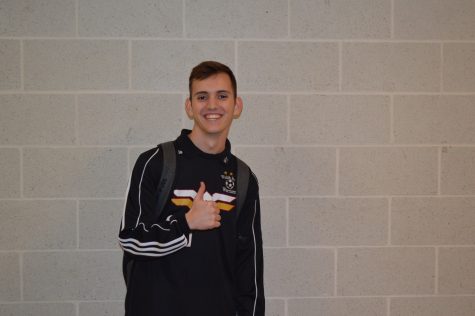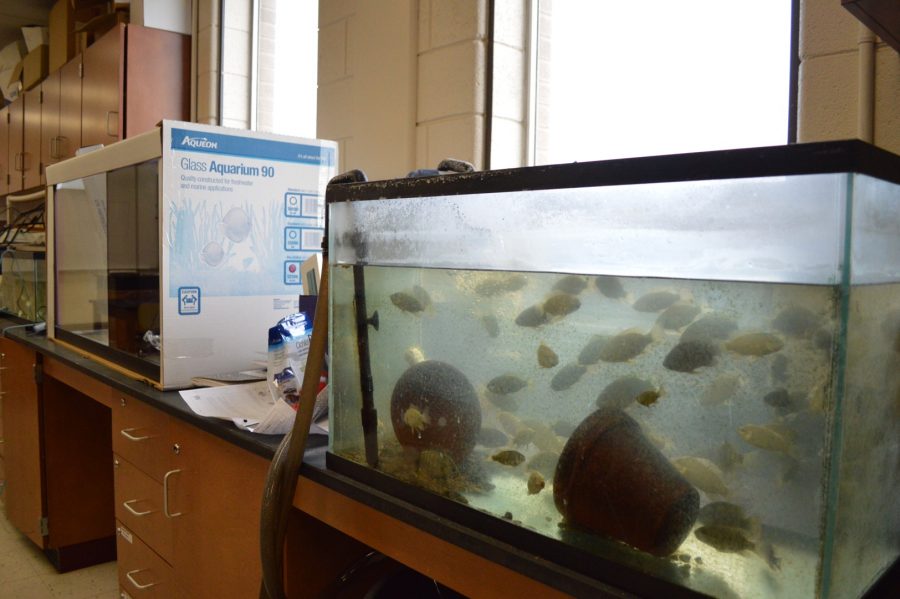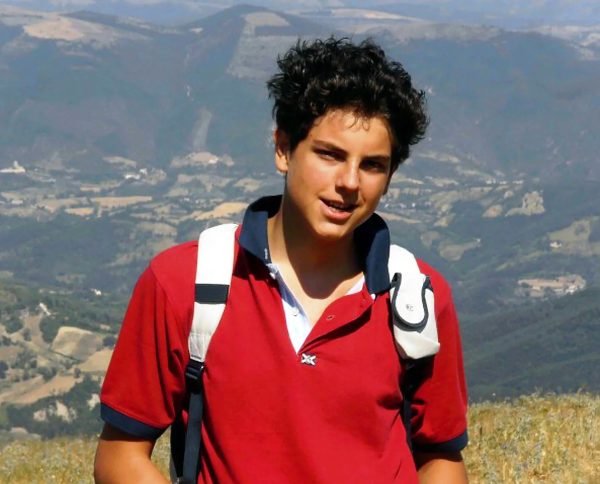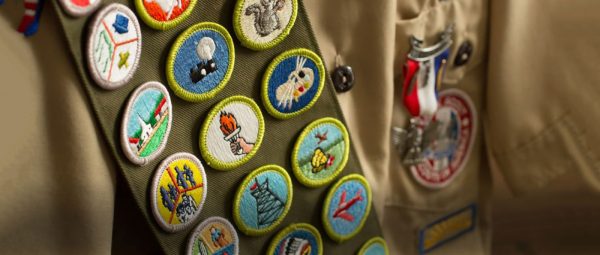There’s something fishy in the science department
A tilapia “fish farm” at Walsh Jesuit? Without a doubt, the fish tanks in Room 230 have sparked curiosity. Jack Dawson, ’20, admitted, “I would catch myself staring at the fish during class,” but the system is more than just a complex aquarium. The tanks actually constitute WJ’s aquaponics system that plays a large role in the Biology and AP Environmental Science classes.
Aquaponics is the combination of aquaculture and hydroponics and involves growing fish and plants together in one system. The fish waste provides an organic food source for the plants, and the plants act as a filter for the water in which the fish live.

Freshmen Brad Wagner, Tristan Zahoransky, Cameron Mayes, and Julia Kovesdi pose by the tanks as they prepare to feed the fish.
When asked the ultimate goal and purpose of the aquaponics system at Walsh Jesuit, Mr. Andy Truax stressed its educational value. Mr. Truax uses “the fish to teach principles of ecology, such as competition and population.”
Noah Casenhiser, ’18, observed, “They remind me of how precious life is because I can see all the stages of the fishes’ life.”
The aquaponics system is also part of student team projects in the AP Environmental Science classes with the goal of making a positive impact on Walsh Jesuit. When asked the objective of his team’s project, senior Tom Dolata said, “We are looking to grow fresh fruits and vegetables [using the aquaponics system]. We want to use the food grown to help with the Labre program since Labre does not always use the healthiest foods.”

Freshmen Brad Wagner enjoys visiting the fish which are part of WJ’s AP Environment Science course. Of the fish in the hydroponics lab, Wagner sated, “I like feeding them and watching them grow.”
Currently, five tanks in the classroom contain smaller, younger fish known as fingerlings. In addition, a 275-gallon tank and a 300-gallon tank filled with adult tilapia are located on the patio outside Mrs. Walker’s art room and in the mobile unit behind Alwin Hall. According to Mr. Truax, the system started with 50 fish and now houses over 300 fish.
Senior Keegan Rankin, a student who works closely with Mr. Truax stated, “We want to create a more sustainable Walsh Jesuit.” Whether it’s for education, Labre donations, or even a fish fry, the aquaponics system may be a valuable asset in the future.

My name is Jesse Liptak. I am a senior at Walsh Jesuit and the News editor for The Pioneer. I enjoy writing stories about new and interesting things happening...











Caroline Kuczek • Apr 3, 2017 at 9:51 am
MORAL SUPPORT CREDITS PLZ